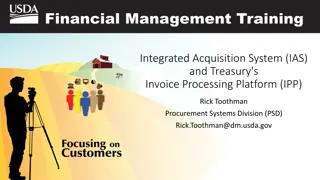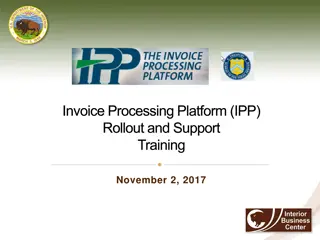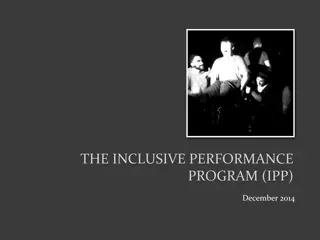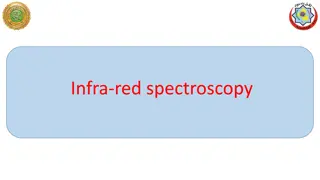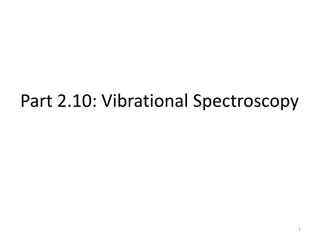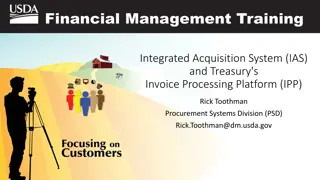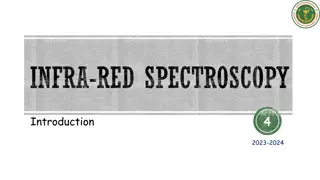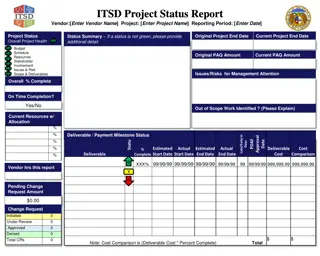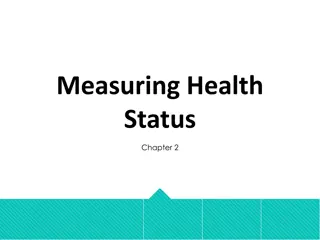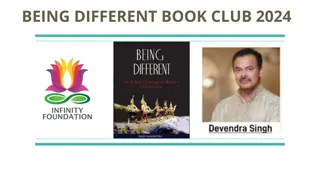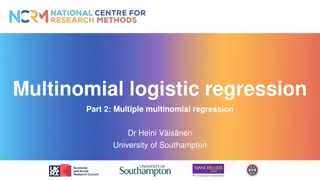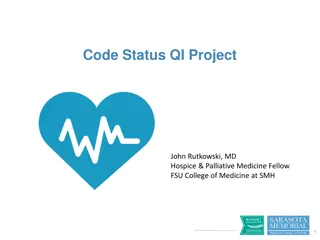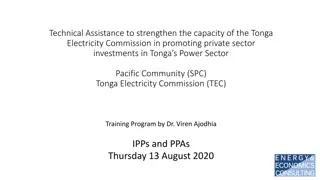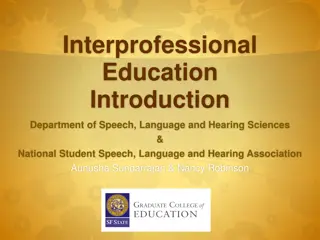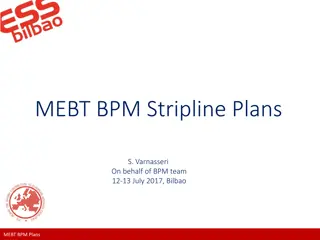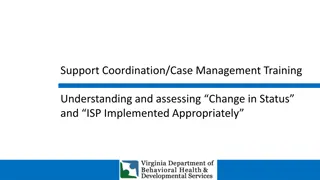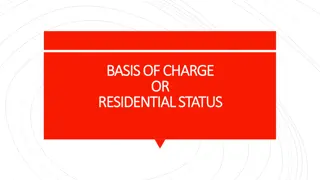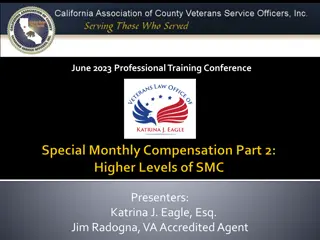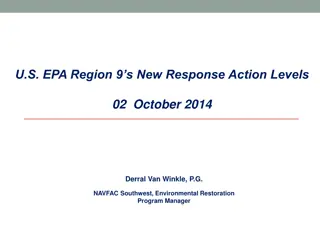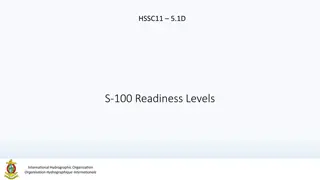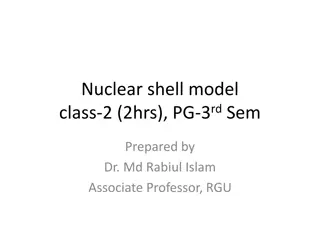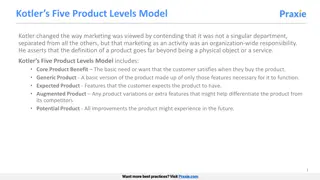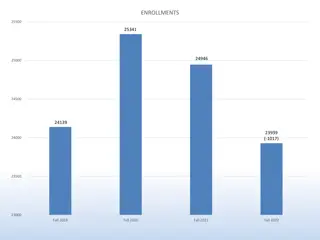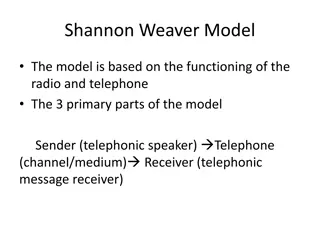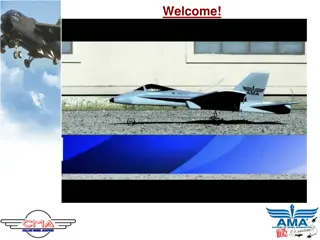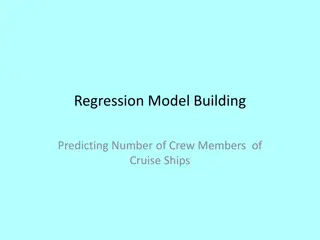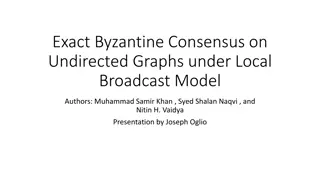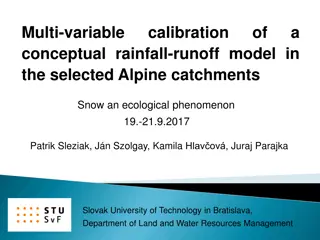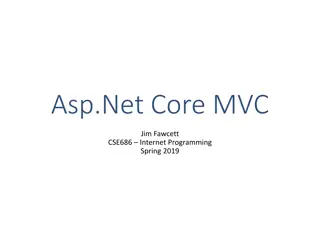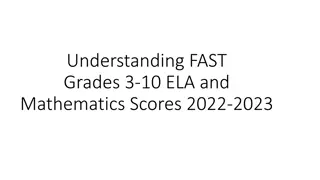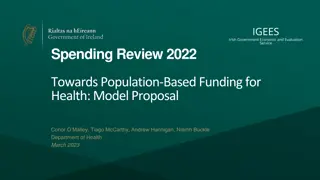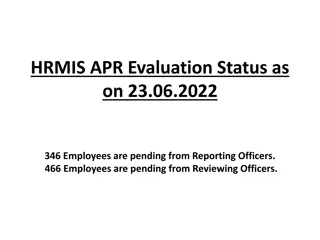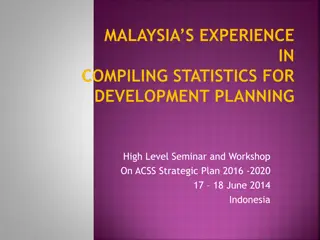Status of IPP-CR Model 2022 for Vibrational Levels of X1
The IPP-CR Model 2022 for vibrational levels of X1 is discussed in detail, including comparisons with other models like Yacora, Buckman, Celiberto, Bardsley, and more. Various reactions, electron impact processes, dissociation pathways, charge exchanges, ionization mechanisms, recombination processes, and collisional recombination are explored. The vibrational ground state and the deviation of relative population for v=14 between Model 2002 and Model 2022 are also analyzed.
Download Presentation

Please find below an Image/Link to download the presentation.
The content on the website is provided AS IS for your information and personal use only. It may not be sold, licensed, or shared on other websites without obtaining consent from the author. Download presentation by click this link. If you encounter any issues during the download, it is possible that the publisher has removed the file from their server.
E N D
Presentation Transcript
Status of the IPP-CR-Model 2022 for the vibrational levels of X1 3.5.2022 Richard C. Bergmayr and the YACORA team 3.5.2022 Status of the IPP-CR-Model 2022 for the vibrational levels of X1 1
Comparison of Models using Yacora Reaction Electron Impact (De-)Excitation Holm Yacora H2IPP Buckman 1985 (n,m {0,14}, n m) Celiberto 1999 Bardsley 1979 Janev 2008 W nderlich 2011 e + H2(v=n) e + H2(v=m) H2VIBR (m=n 1) H2VIBR - H2VIBR H2VIBR AMJUEL - - e + H2(v=n) e + H2(btriplet) e + H(1s) +H(1s) e + H2(v=n) H(1s) + H- H++ H2(v=n) H(1s) + H2+ e + H2(v=n) e + e + H2+ e + H2(v=n) e + e + H(1s) + H+ e + H2+ H2(v=n) e + e + H2+ e + H2(v=n) Dissociation via H2(btriplet) Dissociative Attachment Charge Exchange Non-Dissociative Ionization Dissociative Ionization Radiative Recombination 3 Particle Collisional Recombination - Sawada 1995 Sawada 1995 Buckman 1985: Celiberto 1999: Bardsley 1979: Janev 2008: W nderlich 2011: Sawada 1995: H2VIBR: AMJUEL: S.J. Buckman and A.V. Phelps, J.Chem.Phys. 82, 4999 (1985) R. Celiberto et al., INDC(NDS)-397, International Atomic Data Agency, Wien (1999) J.N. Bardsley and J.M. Wadehra, Phys.Rev.A. 20 (4), 1398 (1979) R.K. Janev and D. Reiter, private communication D.W nderlich, Chem.Phys. 390, 75 (2011) K. Sawada and T. Fujimoto, J.Appl.Phys 78 (5), 2913 (1995) D. Reiter, http://www.eirene.de/html/h2vibr.html, (2017) D. Reiter, http://www.eirene.de/html/amjuel.html, (2020) Electron Impact (De-)Excitation: H2VIBR uses one base cross section (0 1) and the Greenland v scaling. Yacora H2IPP: two base cross sections (0 1,2) plus the Greenland scaling. 3.5.2022 Status of the IPP-CR-Model 2022 for the vibrational levels of X1 2
Vibrational Ground State+ H2-Model Reaction IPP 2002+ IPP 2022+ e + H2(v) e + H2(v ) Electron Impact (De-)Excitation Buckman 1985 Janev 2015/ Laporta 2020/ MCCC (?) e + H2(v) e + H2(n>1) e + H + H Electron Impact Dissociation Celiberto 1999 MCCC e + H2(v) H + H- Dissociative Attachment Bardsley 1979 Horacek 2004/ Laporta 2020 (?) v=0: Urbaine 2013 + Holliday 1971 v>0: Errea 2007+ Janev 2003 H++ H2(v) H + H2+ Charge Exchange Janev 2008 e + H2(v) e + e + H2+ e + H2+ H2(v) Non-Dissociative Ionization W nderlich 2021 W nderlich 2021 Radiative Recombination Sawada 1995 Sawada 1995 3 Particle Collisional Recombination e + e + H2+ e + H2(v) Sawada 1995 Sawada 1995 Electron Impact (De-)Excitation Spontaneous Emission Celiberto 2001/ Janev 2003 Fantz 2006 MCCC Fantz 2006 Transitions via B and C 3.5.2022 Status of the IPP-CR-Model 2022 for the vibrational levels of X1 3
Comparison Model 2002+ and Model 2022 deviation of relative population for v=14 by factor 5.6 3.5.2022 Status of the IPP-CR-Model 2022 for the vibrational levels of X1 4
Comparison Model 2002+ and Model 2022 deviation of relative population for v=14 by factor 5.6 3.5.2022 Status of the IPP-CR-Model 2022 for the vibrational levels of X1 5
Model 2022 EIE: Electron Impact (De-) Excitation etc: Dissociative Attachment, Non-Dissociative Ionization, Radiative Recombination, 3 Particle Collisional Recombination, Transitions via B and C EID: Electron Impact Dissociation CX: Charge Exchange Electron Impact Dissociation and Charge Exchange cause largest deviations to Model 2002+ 3.5.2022 Status of the IPP-CR-Model 2022 for the vibrational levels of X1 6
Vibrational Ground State+ H2-Model Reaction IPP 2002+ IPP 2022+ e + H2(v) e + H2(v ) Electron Impact (De-)Excitation Buckman 1985 Janev 2015/ Laporta 2020/ MCCC (?) e + H2(v) e + H2(n>1) e + H + H Electron Impact Dissociation Celiberto 1999 MCCC e + H2(v) H + H- Dissociative Attachment Bardsley 1979 Horacek 2004/ Laporta 2020 (?) v=0: Urbaine 2013 + Holliday 1971 v>0: Errea 2007+ Janev 2003 H++ H2(v) H + H2+ Charge Exchange Janev 2008 e + H2(v) e + e + H2+ e + H2+ H2(v) Non-Dissociative Ionization W nderlich 2021 W nderlich 2021 Radiative Recombination Sawada 1995 Sawada 1995 3 Particle Collisional Recombination e + e + H2+ e + H2(v) Sawada 1995 Sawada 1995 Electron Impact (De-)Excitation Spontaneous Emission Celiberto 2001/ Janev 2003 Fantz 2006 MCCC Fantz 2006 Transitions via B and C 3.5.2022 Status of the IPP-CR-Model 2022 for the vibrational levels of X1 7
Vibrational Ground State+ H2-Model Reaction * only rate coefficients available IPP 2002+ IPP 2022+ e + H2(v) e + H2(v ) Electron Impact (De-)Excitation Buckman 1985 Janev 2015/ Laporta 2020/ MCCC (?) e + H2(v) e + H2(n>1) e + H + H Electron Impact Dissociation Celiberto1999 MCCC e + H2(v) H + H- Dissociative Attachment Bardsley 1979 Horacek2004/ Laporta2020 (?) v=0: Urbaine 2013 + Holliday 1971 v>0: Errea2007+ Janev 2003 H++ H2(v) H + H2+ Charge Exchange Janev 2008 e + H2(v) e + e + H2+ Non-Dissociative Ionization W nderlich 2021 W nderlich 2021 e + H2+ H2(v) Radiative Recombination Sawada 1995 Sawada 1995 e + e + H2+ e + H2(v) 3 Particle Collisional Recombination Sawada 1995 Sawada 1995 Electron Impact (De-)Excitation Spontaneous Emission Celiberto 2001, Janev 2003 Fantz 2006 MCCC Fantz 2006 Transitions via B and C e + H2(v) e + e + H + H+ Dissociative Ionization - W nderlich 2021 Krstic 2002+2005 ( v=4) H++ H2(v) H++ H2(v ) Proton Impact (De-)Excitation - H++ H2(v) H++ H(1s) + H(1s) H++ H2(v) H(1s)+ H++ H(1s) Proton Impact Dissociation - Janev 2003 H- + H H2(v ) + e H- Associative Detachment - Miller 2011 + Bieniek 1979 v=0: Janev 2003 H + H2(v) H + H2(v ) Hydrogen Atom Impact Excitation - v>0 rates: Gorse 1987 + Krstic 1999 H + H2(v) H + 2 H Hydrogen Atom Impact Dissociation - Janev 2015 rates VT: H2(v) + H2(w) H2(v 1) + H2(w) VV: H2(v) + H2(w+1) H2(v+1) + H2(w) Hydrogen Molecule Impact Excitation - Matveyev 1995 rates (VV,VT) H + H2+ H++ H2(v ) Inverse Charge Exchange - H2++ H2(v) H3++ H H3+Formation - Linder 1995 e + H3+ e + H++ H2(v ) H3+Dissociation - Janev 2015 + Strasser 2001 3.5.2022 Wall Collision Deexcitation Status of the IPP-CR-Model 2022 for the vibrational levels of X1 H2(v) + Wall H2(v <v) 8 -
Vibrational Ground State+ H2-Model Reaction * only rate coefficients available IPP 2002+ IPP 2022+ e + H2(v) e + H2(v ) Electron Impact (De-)Excitation Buckman 1985 Janev 2015/ Laporta 2020/ MCCC (?) e + H2(v) e + H2(n>1) e + H + H Electron Impact Dissociation Celiberto1999 MCCC e + H2(v) H + H- Dissociative Attachment Bardsley 1979 Horacek2004/ Laporta2020 (?) v=0: Urbaine 2013 + Holliday 1971 v>0: Errea2007+ Janev 2003 H++ H2(v) H + H2+ Charge Exchange Janev 2008 e + H2(v) e + e + H2+ Non-Dissociative Ionization W nderlich 2021 W nderlich 2021 e + H2+ H2(v) Radiative Recombination Sawada 1995 Sawada 1995 e + e + H2+ e + H2(v) 3 Particle Collisional Recombination Sawada 1995 Sawada 1995 Electron Impact (De-)Excitation Spontaneous Emission Celiberto 2001, Janev 2003 Fantz 2006 MCCC Fantz 2006 Transitions via B and C e + H2(v) e + e + H + H+ Dissociative Ionization - W nderlich 2021 Krstic 2002+2005 ( v=4) H++ H2(v) H++ H2(v ) Proton Impact (De-)Excitation - H++ H2(v) H++ H(1s) + H(1s) H++ H2(v) H(1s)+ H++ H(1s) Proton Impact Dissociation - Janev 2003 H- + H H2(v ) + e H- Associative Detachment - Miller 2011 + Bieniek 1979 v=0: Janev 2003 H + H2(v) H + H2(v ) Hydrogen Atom Impact Excitation - v>0 rates: Gorse 1987 + Krstic 1999 H + H2(v) H + 2 H Hydrogen Atom Impact Dissociation - Janev 2015 rates VT: H2(v) + H2(w) H2(v 1) + H2(w) VV: H2(v) + H2(w+1) H2(v+1) + H2(w) Hydrogen Molecule Impact Excitation - Matveyev 1995 rates (VV,VT) H + H2+ H++ H2(v ) Inverse Charge Exchange - H2++ H2(v) H3++ H H3+Formation - Linder 1995 e + H3+ e + H++ H2(v ) H3+Dissociation - Janev 2015 + Strasser 2001 3.5.2022 Wall Collision Deexcitation Status of the IPP-CR-Model 2022 for the vibrational levels of X1 H2(v) + Wall H2(v <v) 9 -
Model 2022 with additional processes deviation of relative population for v=14 by factor 3300 wrt Model 2002+ 3.5.2022 Status of the IPP-CR-Model 2022 for the vibrational levels of X1 10
Model 2022 with additional processes deviation of relative population for v=14 by factor 3300 wrt Model 2002+ 3.5.2022 Status of the IPP-CR-Model 2022 for the vibrational levels of X1 11
Wall Collision Deexcitation H2(v) + wall H2(v <v) + wall = X nenH2 X(v ) = (v )/ ne (v ) = w(v,v ) / ? w(v,v ): deexcitation probabilities (from Hiskes 1989) ? = ?m + ?l molecular and laminar diffusion ?l = ?2/D ?: diffusion length D: diffusion constant ?m = d/vth vth=(8 ? ???? ? ? ?2)1/2 d: ratio between volume and surface ? ?, D, ? ?(for divertor plasmas) available? 3.5.2022 Status of the IPP-CR-Model 2022 for the vibrational levels of X1 6
Summary and Outlook update of cross sections for previous processes to most accurate available additional processes for new model identified preliminary results new input data for previous IPP model Electron Impact Dissociation and Charge Exchange cause largest deviations additional processes in new IPP model considered Hydrogen-Atom-Impact Dissociation causes significant depopulation of excited states implementation of further processes in progress testing model on agreed parameter scenario experimental benchmarking 3.5.2022 Status of the IPP-CR-Model 2022 for the vibrational levels of X1 13



